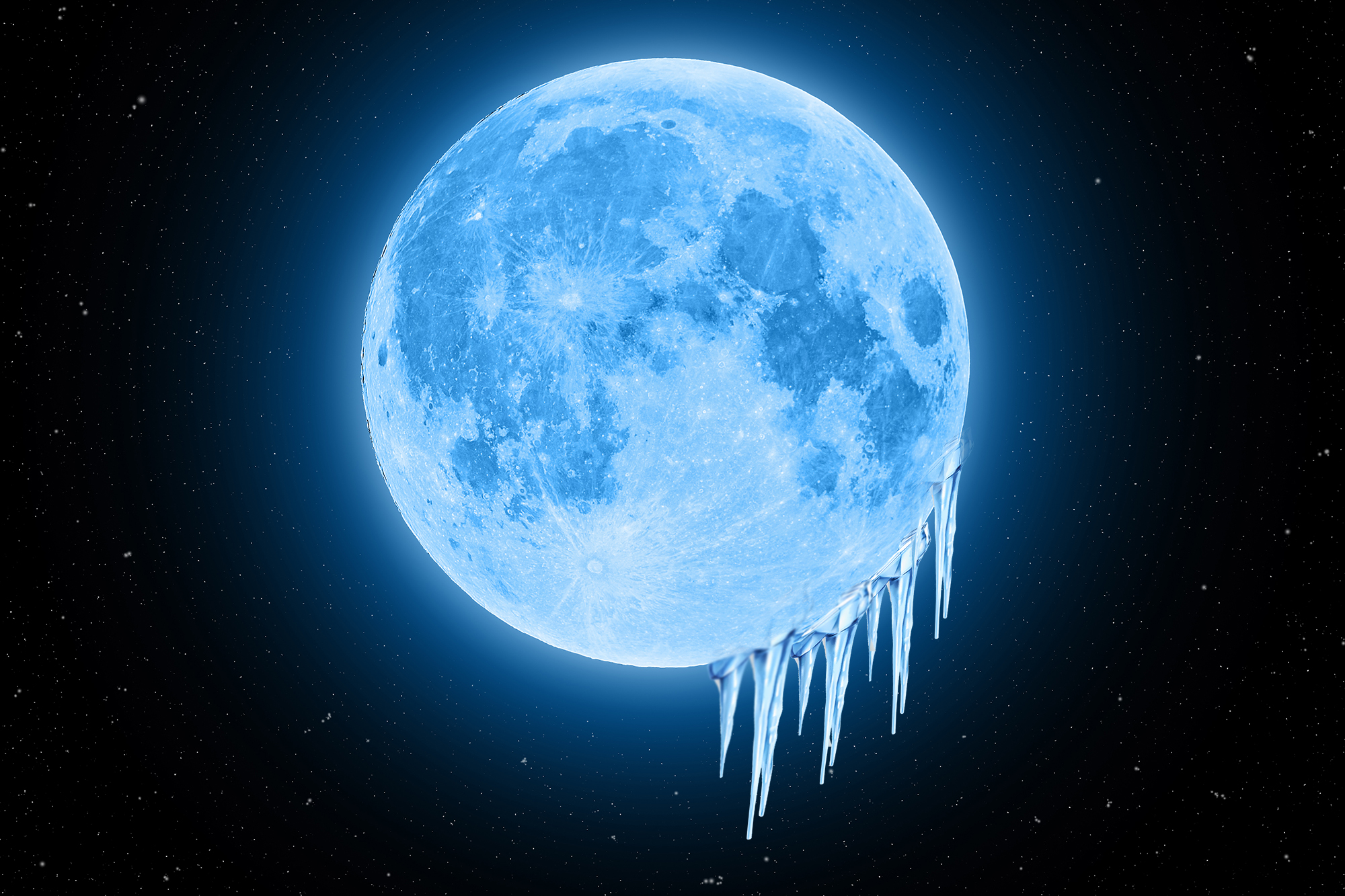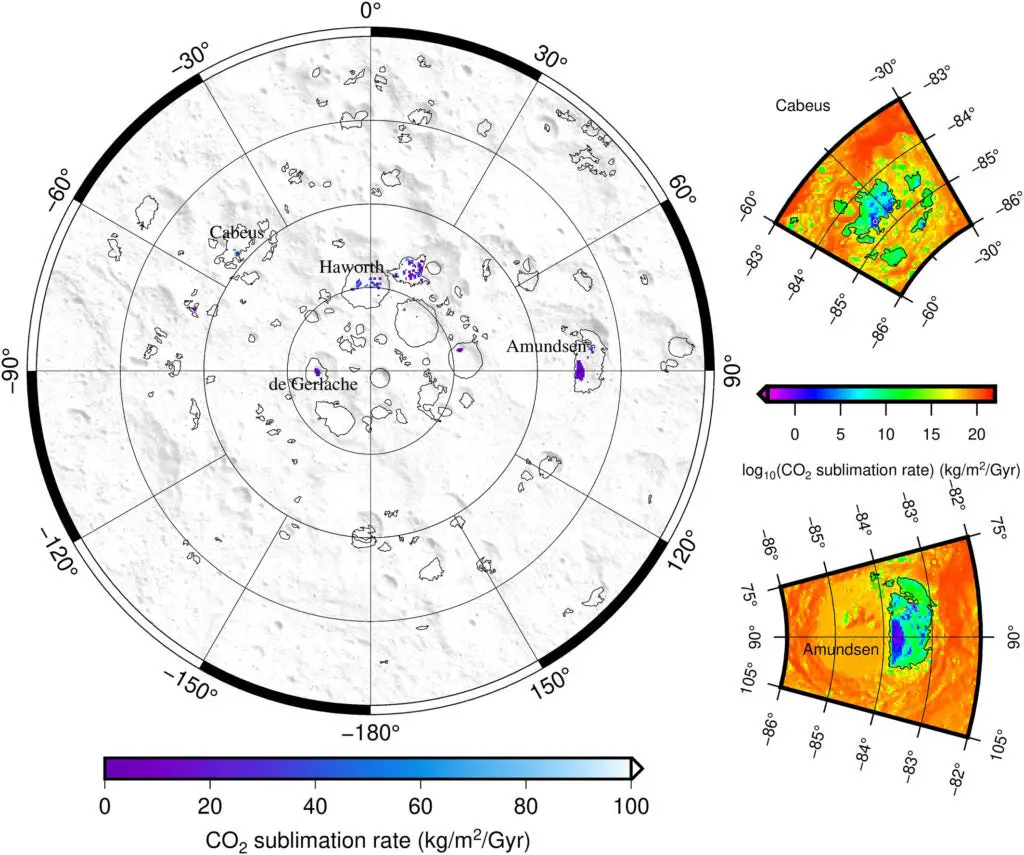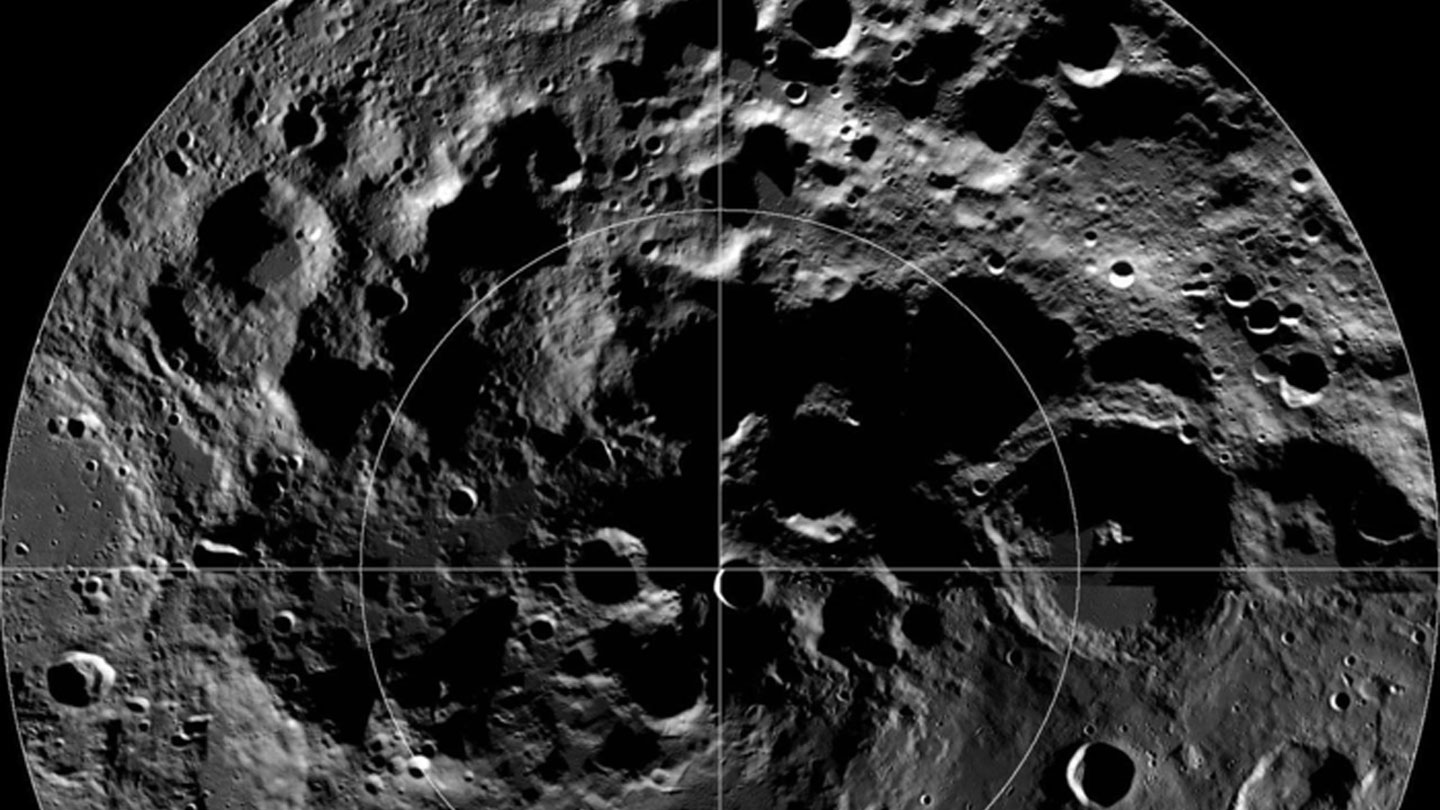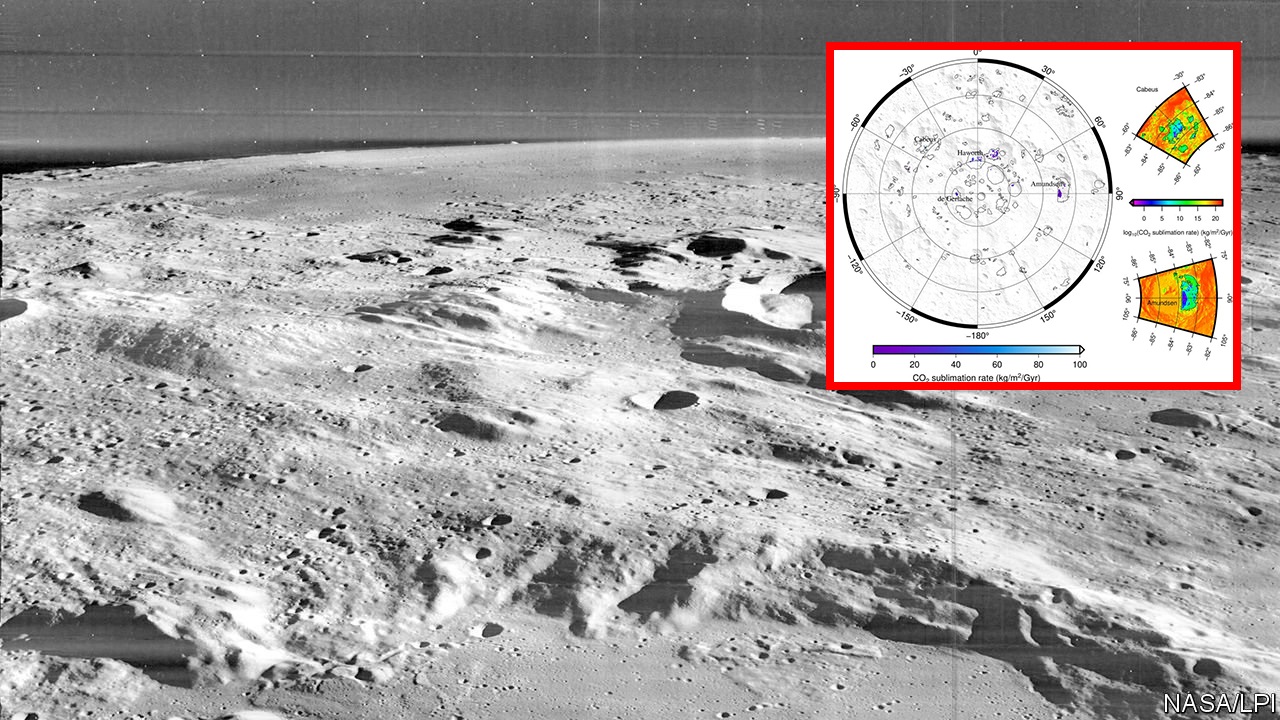According to the authors of new research, a lunar “treasure map” might lead explorers to frozen minerals on the moon, offering crucial elements for fuel and other necessities.
A team of researchers used more than a decade of surface temperature data from the Lunar Reconnaissance Orbiter to map out the moon’s “cold traps”—areas where the temperature is low enough for solid carbon dioxide (CO2) to exist, the same substance as supermarket dry ice. For lunar explorers, these caches might be utilized to create rocket fuel, food, supplies, and oxygen.
According to main research author Norbert Schorghofer, a planetary scientist in Hawaii who works at Arizona’s Planetary Science Institute, cold traps have been a recent focus of lunar explanation since they are where scientists expect to find water.
No one has yet been able to confirm if CO2 ice exists in any of these cold traps, but our research backs up the theory that there are areas that are shadowed and continuously cold enough for ice to live. CO2 is present on the moon, according to direct evidence. NASA’s Lunar Crater Observation and Sensing Satellite (LCROSS) hurled a piece of rocket debris into a lunar crater at great speed in 2009, causing a cloud of particles to stretch into space. Following that, the probe studied the plume and found CO2 and water molecules.
This, together with the revised map of cold zones, suggests that “these cold traps should truly retain CO2,” according to Schorghofer. However, the next step would be for a mission to go out and explore to confirm this.
Water and CO2 ice in space will sublimate above a specific temperature, changing the phase from solid to gas. The sublimation of CO2 ice slows to a halt in some of these cold traps, with just a few millimeters of depth lost per billion years. This, importantly, means that ice should grow on the moon since it gathers ice quicker than it vanishes.


6,000 square miles of water ice traps can be found only in the southern polar area of the world. Despite this, CO2 must be kept frozen at even lower temperatures, and those colder locations are more difficult to locate.
Geophysical Research Letters revealed that Schorghofer’s team discovered 79 square kilometers of shadowed craters near the south pole where solid CO2 may exist. When the moon becomes a little hotter in the summer, any ice that is there will melt more quickly.
Scientists who study the lunar poles and are particularly interested in ice found there, such as Paul Hayne of the University of Colorado Boulder, say these regions represent a large area where CO2 can be stable, despite the gas’ volatility. Hayne was not involved in the study but is an expert on lunar pole ice.

For at least a billion years, the traps have been hidden away in “shadows inside shadows,” says Hayne. The existence of these zones had been known to scientists, but they had no idea how frigid or vast they were until now.
“A treasure map” of cold traps has been provided, but getting there and removing CO2 is another matter, adds the author.
Hayne believes that future lander and astronaut missions will locate numerous smaller cold traps that were too tiny to observe from orbit. Carbon is a valuable resource on the moon, but it is very scarce. He claims that methane, the fuel of choice for current SpaceX rockets, can be produced from CO2.
The origin of the lunar CO2 is unknown. According to Schorghofer, the majority of it is likely deposited by comets that are rich in various forms of ice. However, impacts of carbon-rich meteorites into the lunar surface may also produce CO2 via chemical reactions. Moon “outgassing” may enable CO2 buried deep under the surface to gently rise to the surface of the Moon.
Carbon on the moon is so scarce that it may be “as the quest for oil was on Earth in the early days,” adds Schorghofer. Concentrated hydrocarbons used to be sought, but “today we are searching for concentrated carbon.”

